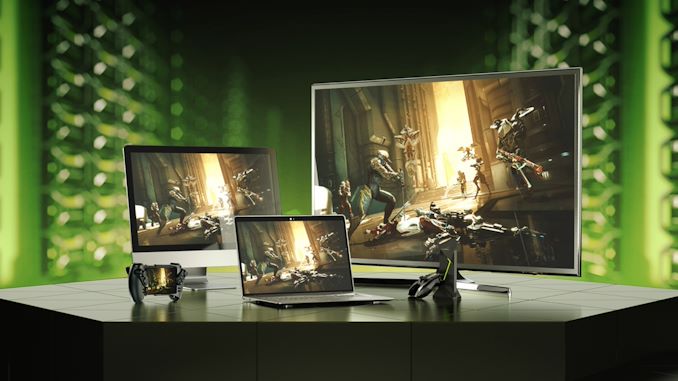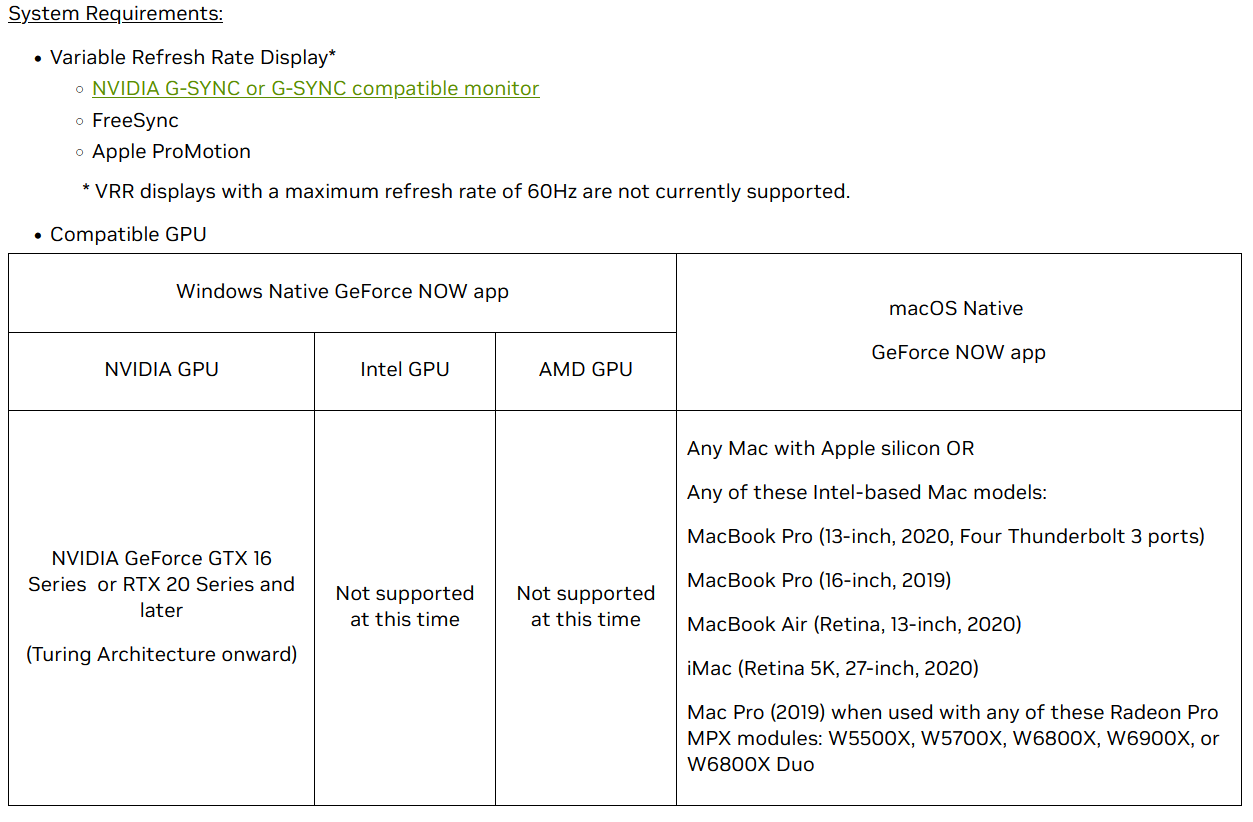Variable Refresh Rate Support Comes to NVIDIA’s GeForce Now Cloud Streaming Service
by Matthew Connatser on March 7, 2024 7:00 PM EST- Posted in
- Gaming
- NVIDIA
- G-Sync
- Cloud Gaming
- GeForce NOW
- VRR

Today NVIDIA has brought variable refresh rate support to its GeForce Now cloud gaming service. The company initially promised variable refresh support on GeForce Now back in early January during CES, and has seemingly waited so that it could launch alongside GeForce Now Day Passes, which are also now available.
Variable refresh rate (VRR) technologies, including NVIDIA's own G-Sync, have been around for around a decade now, and allow a monitor to synchronize its refresh rate to the instantaneous framerate of a game. This synchronization prevents screen tearing, when two or more frames are present on a display at the same time. Without a VRR technology, gamers either have to tolerate the visual incongruity of screen tearing or enable V-Sync, which solves screen tearing by locking the framerate to the refresh rate (or a fraction thereof). VRR became popular because V-Sync added latency and could depress framerates due to it effectively being a framerate limiter.
Dubbed "Cloud G-Sync", NVIDIA touts not only a screen tearing-free experience for GeForce Now thanks to variable refresh rate support, but also lower latency thanks to “varying the stream rate to the client, driving down total latency on Reflex-enabled games.” Prior to VRR’s debut on GeForce Now, users either had to enable V-Sync in-game, enable a stream-level V-Sync setting that had the benefit of not locking the game framerate, or accept screen tearing. GeForce Now Ultimate members will also be able to pair VRR with Reflex-powered 60 FPS and 120 FPS streaming modes.
According to NVIDIA’s technical documentation, variable refresh rate support on GeForce Now can work with both Mac and Windows PCs hooked up to a VRR-capable monitor. This includes G-Sync monitors on Windows, as well as VESA AdaptiveSync/FreeSync monitors, HDMI 2.1 VRR displays, and even Apple ProMotion displays, such as the panels built into their recent MacBook Pro laptops. The biggest compatibility hurdle at this time is actually on the GPU side of matters; Windows machines need an NVIDIA GPU to use VRR with GeForce Now. Intel and AMD GPUs are "not supported at this time."
Although G-SYNC originally came out in 2013 and GeForce Now has been available since 2015, the two never intersected until now. It’s not clear why NVIDIA waited so long to bring G-Sync to GeForce Now; the company’s original announcement merely states “newly improved cloud G-SYNC technology goes even further,” implying that it wasn’t possible before but doesn’t exactly explain why.
Source: NVIDIA











2 Comments
View All Comments
PeachNCream - Friday, March 8, 2024 - link
The bulk of people that might find it useful to farm out gaming to a rack of remote servers are those that would be running iGPUs from Intel or possibly AMD, but VRR requires a GeForce dGPU which implies at least some amount of on-premise gaming capacity that makes the feature less relevant.NextGen_Gamer - Friday, March 8, 2024 - link
I don't think so - GeForce Now is cloud-driven, and I guessing the Windows limitation is purely for driver/software stability at the moment. NVIDIA obviously knows how GeForce Now works, and obviously knows best how its own drivers work when VRR is enabled. Now, how soon NVIDIA wants to make sure it works well with AMD's/Intel's drivers, I don't know. But the sooner the better, since I would guess like you said the majority of GeForce Now users are on iGPUs from AMD or Intel.